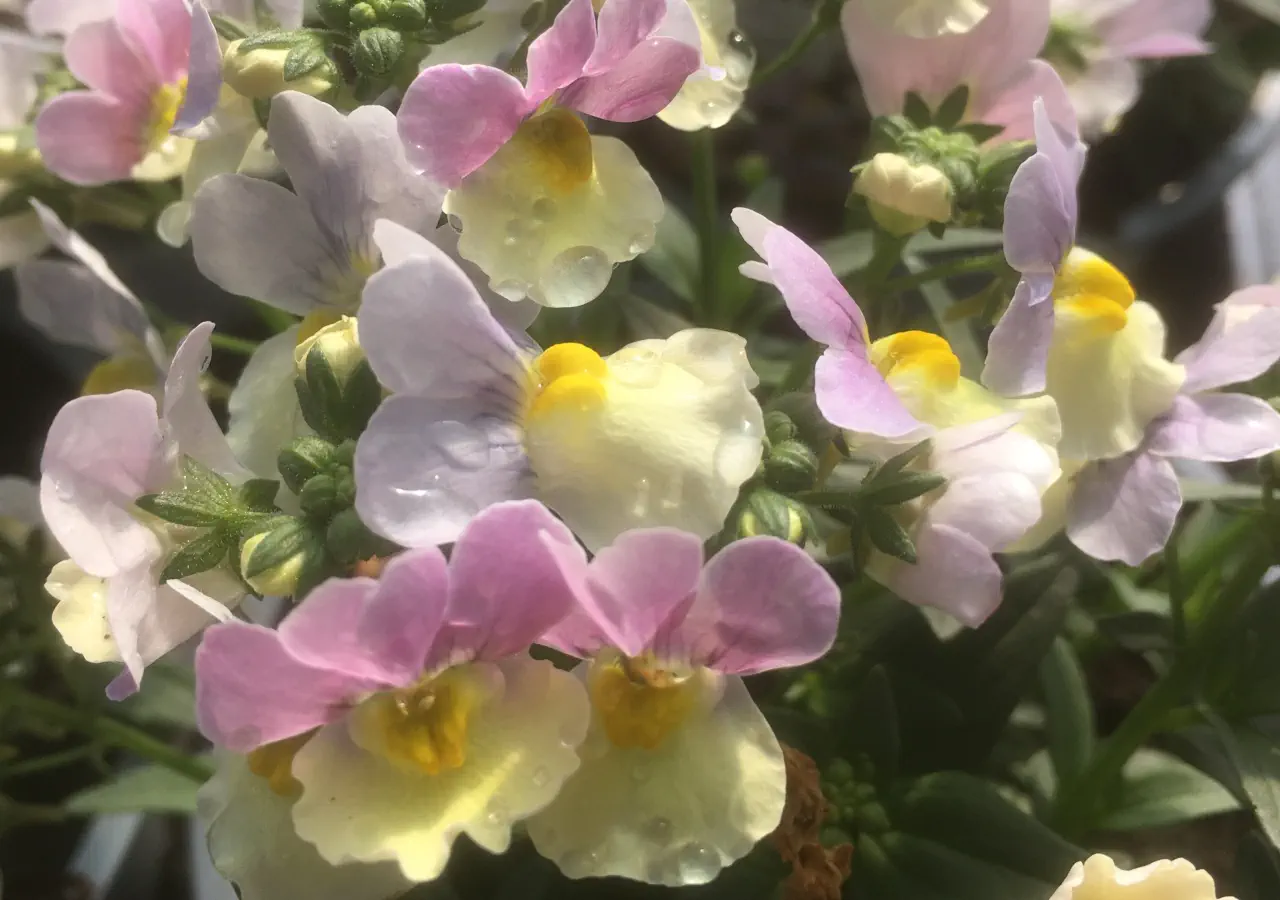Nemesia Easter Bonnet

Nemesia Easter Bonnet: A Burst of Springtime Colour for Every Garden
Looking to add a splash of colour to your garden or patio? Nemesia Easter Bonnet might be just what you need! Known for its cheerful, pastel-coloured blooms, this easy-to-grow plant brings a delicate charm and a lively pop of colour to garden beds, hanging baskets, and window boxes. With blooms resembling tiny, colourful bonnets, it’s especially popular in spring and early summer displays. Here’s everything you need to know to make Nemesia Easter Bonnet the star of your garden.
What is Nemesia Easter Bonnet?
Nemesia Easter Bonnet is a compact, flowering annual that bursts with clusters of small, two-lipped blooms in shades of pink, lavender, yellow, and white. The flowers are fragrant and grow in dense clusters, creating a soft, cottage-garden vibe. This variety of Nemesia is particularly loved for its pastel colours and sweet scent, which adds a fresh, spring-like quality to any setting.
Native to South Africa, Nemesia is a sun-loving plant that thrives in cooler weather, making it perfect for early spring planting when temperatures are moderate.
Why Choose Nemesia Easter Bonnet?
Nemesia Easter Bonnet offers a variety of benefits, making it a favourite for both new and experienced gardeners. Here’s why:
Vibrant Colours: The pastel shades of Easter Bonnet are perfect for spring displays. Its soft colours bring a fresh, bright look that’s a great complement to other early bloomers.
Compact Size: With its low, bushy growth habit, Nemesia fits nicely in smaller spaces. It’s perfect for edging pathways, adding colour to window boxes, or filling in gaps in garden beds.
Fragrance: Many varieties of Nemesia, including Easter Bonnet, are lightly fragrant, adding a gentle, sweet scent to your garden—an added bonus for outdoor spaces!
Pollinator-Friendly: The flowers attract bees, butterflies, and other friendly pollinators, making it a great choice for an eco-friendly garden.
Continuous Blooms: Once it starts blooming in early spring, Nemesia will keep producing flowers until the weather gets too hot, offering several weeks of colour and beauty.
Growing Conditions for Nemesia Easter Bonnet
Nemesia Easter Bonnet is relatively easy to care for, but here’s what it likes best:
Sunlight: It loves full sun to partial shade. Ideally, provide it with morning sun and afternoon shade, especially in warmer climates. Too much direct sunlight in hot weather can stress the plant, so a bit of shade helps it thrive longer.
Soil: Well-draining soil is essential for Nemesia. A loamy, nutrient-rich soil is ideal; if you’re planting in containers, a high-quality potting mix works perfectly.
Watering: Nemesia prefers consistently moist soil but doesn’t tolerate waterlogged conditions. Water regularly, especially if you’re growing it in containers, and avoid letting the soil dry out completely.
Fertiliser: A balanced, water-soluble fertiliser applied once every two weeks will support continuous blooms and healthy growth. Be careful not to over-fertilize, as too much nitrogen can cause the plant to focus on foliage instead of flowers.
Temperature: Nemesia thrives in cooler temperatures, making it a great choice for early spring and fall planting. In areas with mild summers, it may bloom all season long, but in hotter climates, it may take a break in the peak of summer and rebloom in fall as temperatures cool down.
Creative Ways to Use Nemesia Easter Bonnet in Your Garden
Wondering where to plant Nemesia Easter Bonnet? Here are some creative ideas:
Containers and Window Boxes: With its compact size, Nemesia Easter Bonnet is perfect for containers and window boxes. Mix it with trailing plants like lobelia or ivy for a dynamic arrangement, or let it shine on its own.
Hanging Baskets: Nemesia’s bushy, low-growing habit makes it a lovely addition to hanging baskets. Combine it with other cool-season annuals, like pansies or violas, to create a lush, spring display.
Borders and Edging: Plant it along the edge of garden beds or pathways to add a pop of colour. Its compact, mound-like growth makes it a neat, natural border.
Underplanting Taller Blooms: Use Nemesia as a filler under taller plants, like tulips or daffodils. The soft colours of Easter Bonnet complement many spring bulbs, creating a layered, multi-dimensional look.
Rock Gardens: If you have a rock garden or raised bed, Nemesia’s small stature and delicate blooms fit perfectly among stones or as ground cover in cooler, shaded spots.
Common Issues and Tips
While Nemesia is generally easygoing, a few common issues can arise:
Leggy Growth: If the plant becomes leggy, try pinching back the stems to encourage fuller, bushier growth. Legginess can also happen if it’s not getting enough light, so consider moving it to a sunnier spot.
Wilting in Hot Weather: Nemesia doesn’t like intense heat, so if it wilts in the summer, give it some afternoon shade or move containers to a cooler area.
Powdery Mildew: In humid conditions, Nemesia can be susceptible to powdery mildew. Ensure it has good airflow, and avoid wetting the leaves when you water.
Yellowing Leaves: Yellow leaves may be a sign of overwatering or poor drainage. Adjust your watering routine if necessary, and check that the soil drains well.
Final Thoughts
Nemesia Easter Bonnet is a delightful addition to any spring garden, adding colour and fragrance to spaces that might otherwise lack brightness in early spring. With its ease of care and beautiful pastel blooms, it’s a great choice for gardeners who want something cheerful and low-maintenance.
Whether you’re planting it in hanging baskets, filling out garden beds, or adding colour to window boxes, this charming plant is sure to bring a fresh, springtime feel to your outdoor spaces. Give it a try, and enjoy the joy that these cheerful blooms bring from early spring right into the cooler autumnal days.
